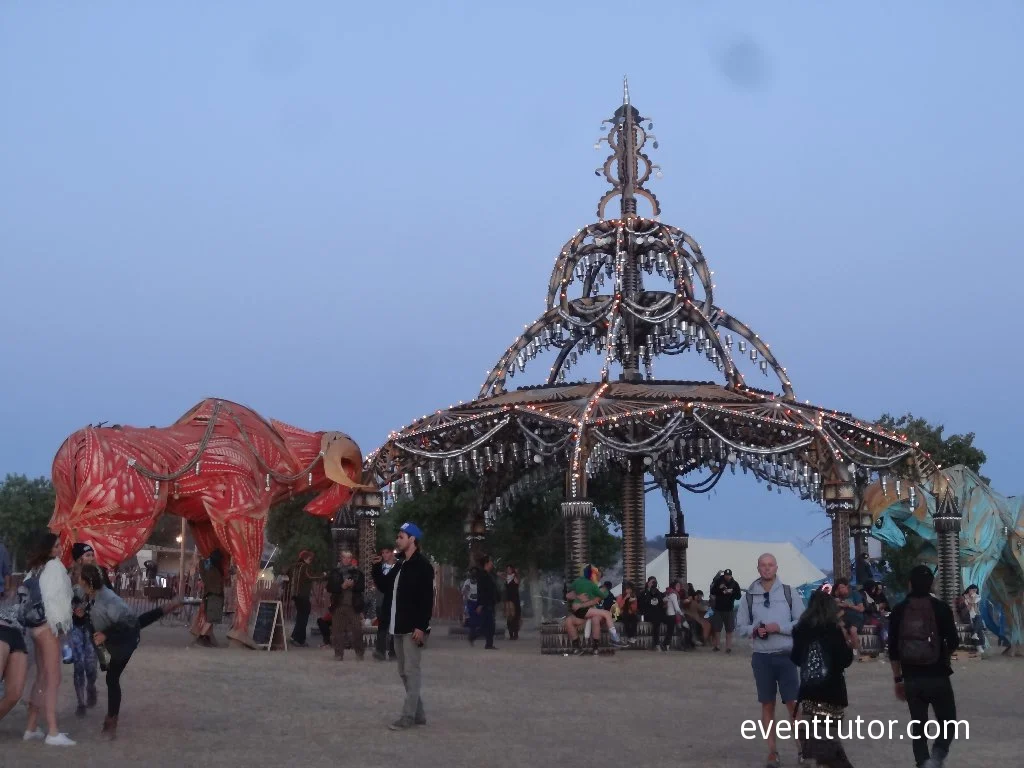More and more event organizations have an environmental policy in place. But what does such a policy actually look like? Event planners need to have a plan and a vision of how they want to run the organization. You need to set your objectives for your organization and your event. Event planners please… make sure you can live up to them! You can read more about environmental policies in my eBook Event Management: Your Environmental Plan.
American music festivals and environmental policies
Over the last 2 years I have assessed the environmental plans of several American music festivals. A good plan starts with an environmental policy. An environmental policy is a statement of what you, your organization, and your event stand for. Let’s have a look at three successful festivals in America.
Lightning in a Bottle festival
Lightning in a Bottle, organized by The Do Lab, has won the Greener Festival Award 4 years in a row. The festival’s ethos is explained on their website:
At Lightning in a Bottle 2015
“We want you to leave it better, leave it beautiful! We want YOU to leave the event with better tools for your life, and leave the land better and more beautiful than you found it. As an integral part of our community, please find ways to "Leave A Positive Trace" from our time together.”
This vision is directly aimed at the audience. Without your help and involvement we can’t do it, they seem to say. I agree with this. In order for it to work you have to make sure that your vision of adopting a sustainable policy is communicated and explained to your audience. This means that your vision is visible on site. Think of how you communicate your recycling ambitions to your visitors. What about how they use and consume water whilst at the festival? Can you educate your attendees whilst they are at your event? At this festival they certainly try.
Shambhala Music Festival
I have not personally assessed this festival but on their website they state:
“Shambhala is cutting edge in its production and does not accept any corporate sponsorship. This allows the festival to retain a true reflection of the people on the dance floor and their vision of what their community looks like. This mission is important to hold down as electronic dance music culture moves into the mainstream where threatened large corporations and production budgets threaten to water it down. In this respect, the Shambhala community is like no other. You will not see one advertisement or corporate logo on the farm.”
At the UK Shambhala festival they will not serve any meat dishes this year
This is a great example of what a festival can stand for. Please don’t think that in order to go green you need to abandon corporate sponsorship. This is a choice Shambhala made! They make it clear to everyone that this is what they stand for and this is how they want to organize their festival.
Bonnaroo Music & Arts Festival
The festival has won the Greener Festival Award for several years now and is an excellent example of what a festival with 80,000 visitors can do to implement sustainable practices. When the festival is finished Bonnaroo produces a ‘Report to the Fans’ in which they display data about water usage on site, waste management, carpooling, and other sustainable initiatives. A great example of how you can communicate with your audience and make them aware of how they [the audience] contribute to the sustainable policies of the festival.
On their website they state:
“We don’t just want to be the best festival. We aspire to be the greenest festival, and set the standard in sustainability and greening practices for North American concert events. To do so, we will engage fans, artists, the public, officials and even other festivals. Because of what’s at stake, we will gladly spend the extra effort and cost this sometimes involves. We believe our commitment to being sustainably green doesn’t hurt the Bonnaroo experience, but rather defines it and improves it. Who says you can’t have fun while changing the world?”
The nice thing about all three examples is that they are from different festival organizations. Each organization has a different idea about what their festival should look like but they all share that desire to organize a festival that gives something back. Giving back to the audiences but also the local communities.
In my previous blog I mentioned the 4 pillars of sustainability. Read the above visions again and let me know if you can find all four pillars back in the visions of these festivals. Pretty good, right?
For more information about sustainable event planning visit my website The Event Tutor and subscribe to my online workshop Sustainable Event Management In 8 Easy Steps.


